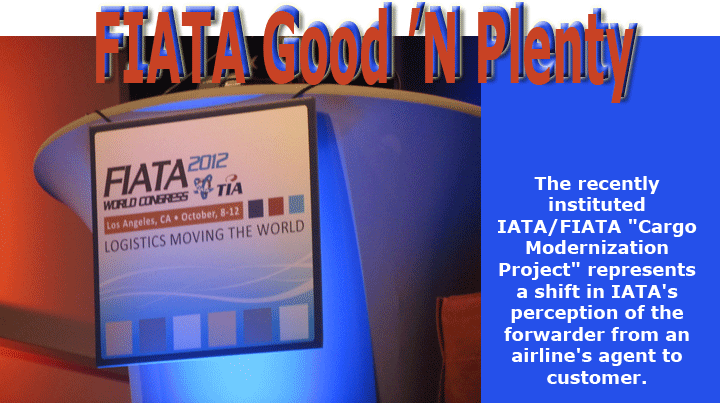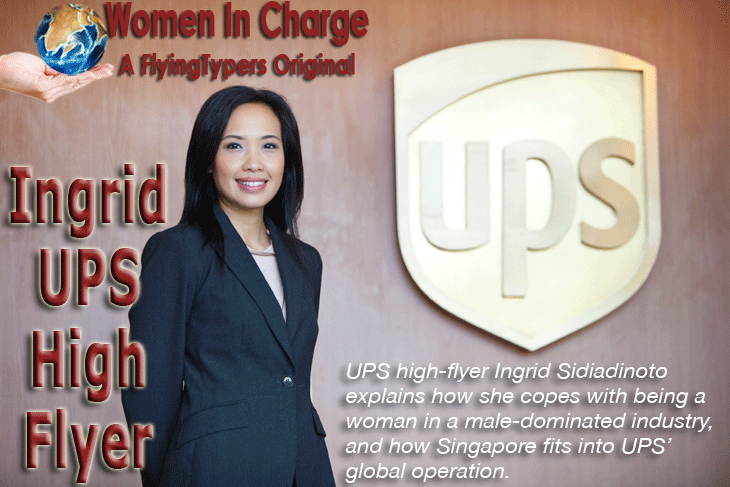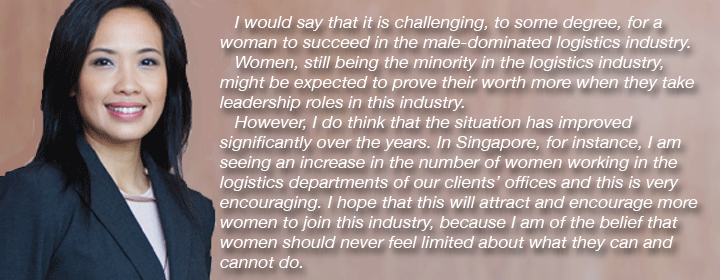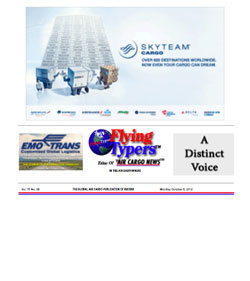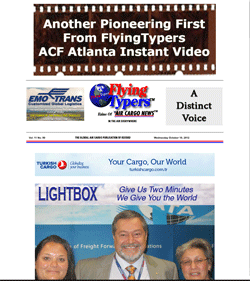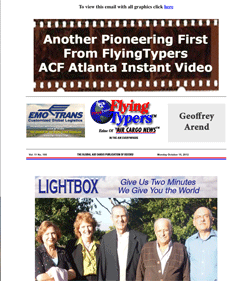 |
 |
|
| |
||
|
Vol. 11 No. 101 Wednesday October 15, 2012 |
|
As
FIATA delegates gathered in downtown
Los Angeles, California, this past
week, the global group’s return
to the USA marked 30 years since its
last appearance on these shores, and
also the 50th edition of the FIATA
World Congress itself. |
For
those familiar with IATA, the Airforwarders
Association (AfA), and similar industry
bodies, FIATA is a rather different
animal altogether. Whereas airlines
and/or forwarders are members of IATA
or AfA respectively, the membership
in FIATA, as its name reveals –
International Federation of Freight
Forwarders Associations—is mostly
composed of the national forwarders’
association of member countries. However,
individual, i.e. company, membership
is possible. The result is that forwarders
are generally represented by delegates
of national forwarder associations.
The decision-making process can be
drawn out.
|
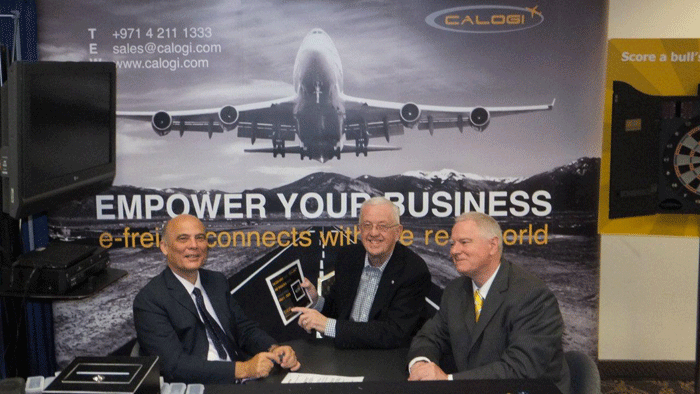 |
It's
no secret that the relationship between
IATA and FIATA has had its contentious
moments, and this session was no exception.
This time the IATA business practices
in India were sharply criticized,
with the IATA representative remaining
remarkably patient and attentive to
all concerns. Tensions rise or ebb
as time goes by because the parties
pulling the strings in the areas of
disagreement are not direct actors
that interact regularly between forwarders
and airlines, but rather IATA bureaucrats,
not held unaccountable despite Tony
Tyler.
Brandon
Fried of the Airforwarders Association
said he agrees with the perception
that IATA should be considered a partner
from the "same side of the table"
since both FIATA and IATA are partners,
and looks forward to working with
FIATA, IATA, and CNS in working to
promote the new proposal and a future
cooperative relationship.
Chris
Kenally, U.S. Customs and Border Protection,
presented the new Air Cargo Advanced
Screening (ACAS) initiative to the
full conference, explaining that the
program driver is national security
and that while freight forwarder concerns
will be acknowledged and addressed,
the ACAS will become mandatory after
the first of the year. Brandon stated
that AfA looks forward to working
with CBP throughout the pilot phase
to help the agency solve ACAS filing
concerns so that all entities can
enjoy easy access to the system through
a number of methods. AfA remained
concerned with the current lack of
forwarder pilot participants and urged
CBP to quickly include those who have
applied and are in the decision review
phase, with the hope that CBP will
increase its outreach efforts to forwarders
outside the U.S., since those entities
will be the ones creating the ACAS
filings well before flight departure.
From
a congress participant perspective,
the fees were $1,150 for regular delegates;
an exhibition 10’X10’
booth went for $2,150, with the larger,
island/peninsula stand (20’X20’)
for $8,600. Relatively affordable,
especially when compared to the recent
TIACA show.
Ted Braun
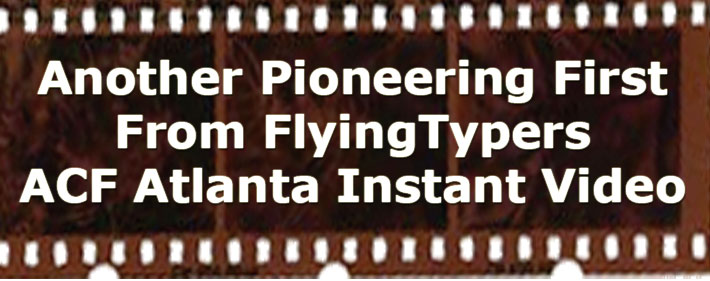 |
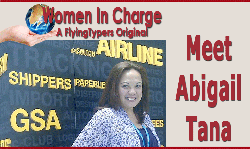 Abigail Tana |
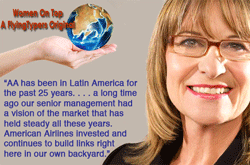 Carmen
Taylor Carmen
Taylor |
 Pin Kee Chong |
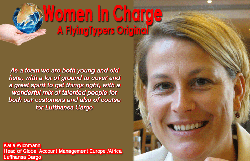 Katja Wichmann |
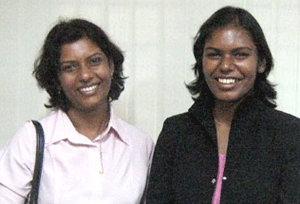 Women At Kingfisher |
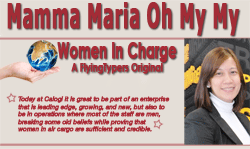 Maria Garcia |
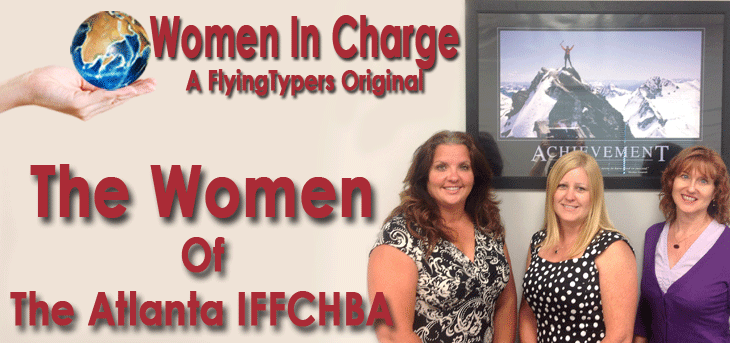 The Atlanta IFFCHBA |
 Flossie Arend |
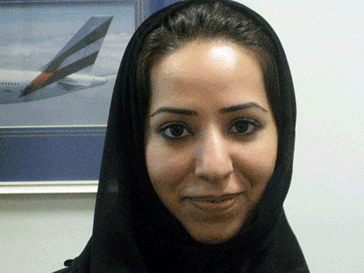 Budoor Al Mazmi |
Get
On Board Air Cargo News FlyingTypers |
|
A
couple of weeks ago we ran a story
about one of our all-time favorite
airplanes, the fabled Boeing B377
Stratocruiser. |
If
You Missed Any Of The Previous 3 Issues
Of FlyingTypers |
|||||
|
|||||
FT100812 |
FT101512 |
||||
|---|---|---|---|---|---|


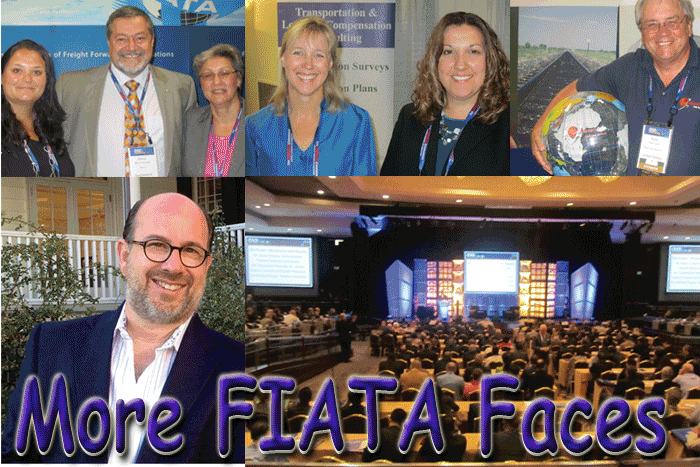
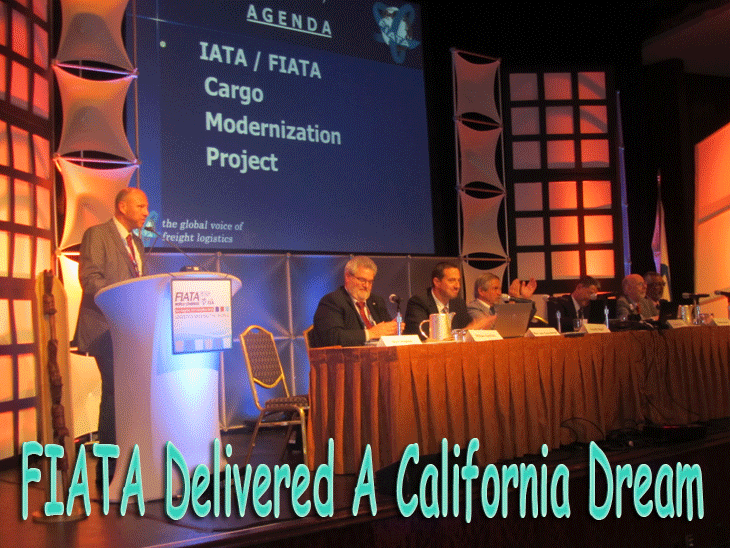
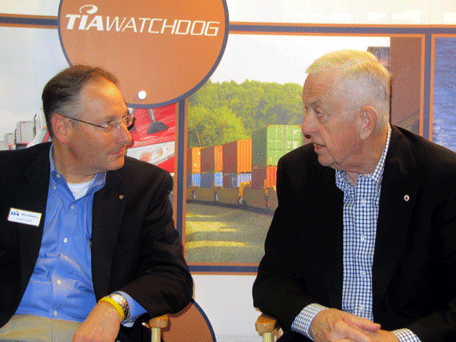 Robert
Voltmann (in photo L with FT
Publisher Geoffrey Arend) told FlyingTypers:
Robert
Voltmann (in photo L with FT
Publisher Geoffrey Arend) told FlyingTypers: